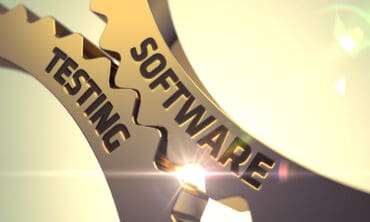
RTInsights sits down with Moogsoft’s Will Cappelli to discuss the expanding role and importance of artificial intelligence for IT operations (AIOps).
Businesses today must be able to quickly deploy new applications to meet changing market conditions, meet increasingly demanding user expectations, improve operations, and deliver better services. Increasingly, IT organizations are deploying technologies that take manual work out of the picture and replace them with processes that automate network and systems control. The ultimate fruition of these efforts is to use artificial intelligence for IT operations (AIOps), which uses artificial intelligence to enhance and automate IT operations.
![Featured Resource: Observability with AIOps For Dummies [Download Now]](https://no-cache.hubspot.com/cta/default/8019034/d0413c26-95d1-4dc7-a112-192c3e372de0.png)
To get a better understanding of what AIOps is, can do, and where the field is heading, I recently sat down with Will Cappelli, who recently joined Moogsoft as CTO, EMEA and VP of Product Strategy. Cappelli brings an interesting background to the job. He studied math and philosophy in college and has been involved in the IT industry for more than 30 years. For most of his professional life, he has focused on both AI and IT operations management technology and practices. As an analyst at Gartner, he was widely credited for having been the first to define the AIOps market. In his spare time, he dabbles in ancient languages. Here is a synopsis of our conversation:
RTInsights: With today’s chaotic world events and instantaneous shift to a virtual operating environment, what role can AIOps play?
Cappelli: AIOps plays a unique role in today’s ‘new normal.’ IT teams can add AI to their technology to mitigate much of the damage that comes from the lack of physical presence while adding new advantages.
For example, enterprises can leverage AIOps to automate initial observations and streamline data sets by removing noise and redundancy and automating the pattern discovery process, while streamlining communication and collaboration across the entire enterprise. This is essential as global enterprises are shifting to remote work — some of them overnight.
RTInsights: What are the main business drivers for AIOps?
Cappelli: In today’s digital business era, AIOps translates to improved digital service uptime, which translates directly to drastically improved customer experience. Additionally, AIOps correlates important alerts and groups them into actionable, contextual situations, and identifies the probable root cause and prescribes solutions.
True AIOps is resilient to change and works seamlessly with modern IT stacks such as containers and ephemeral infrastructure. In addition, it allows teams to work on high value-add and innovation-related tasks rather than configurations and other drudgery.
When IT teams leverage AIOps, they can focus on larger issues facing the business and its customers, while AI keeps the lights on in the background.
RTInsights: Can you give us some examples of enterprises who have seen success with AIOps?
Cappelli: There are many. One high profile example is American Airlines. It has cut the average time it takes to resolve technical snafus by 50%. Moogsoft’s AIOps solution is used at the company’s 24/7 IT Global Situation Center and analyzes 5 million IT error notices and warnings each month, or about two every second.
In another example, using Moogsoft, KeyBank has already seen a 98% decrease in operational event noise, and its change management team is now processing four times the number of changes per week than they did two years ago.
![Featured Resource: Observability with AIOps For Dummies [Download Now]](https://no-cache.hubspot.com/cta/default/8019034/d0413c26-95d1-4dc7-a112-192c3e372de0.png)
RTInsights: What are the greatest challenges in realizing the value of AIOps?
Cappelli: IT administrators can be a conservative bunch when it comes to adopting new technology. Both trust and the sheer level of adoption play a significant role in realizing value. AIOps requires massive amounts of data, and if both trust and adoption levels are low within an organization, an AIOps platform’s true capabilities will not be fully realized.
Digital transformation means change, and conservative mindsets aren’t well-tuned to change. IT leaders must understand that the systems they built 15, 10, even five years ago may have been cutting edge at the time, but technology – and soon, the market – has moved on.
As they say in the writing community, sometimes an author must “kill their darlings.” This sentiment rings true in the IT world industry, too.
RTInsights: AIOps has a broad range of ever-increasing sophisticated capabilities. Where are the majority of enterprises today in their AIOps journey?
Cappelli: Until a few years ago, it was definitely the early days, largely experimental by the early adopters like financial services companies. And less than 50% of business processes were touched by IT Operations.
But now, with the massive acceleration of digitization of business processes, IT Operations are involved with 80% to 90% of business process events in an organization. It is this rapid increase in complexity that is driving many relatively conservative companies to move to AIOps. That said, since AI touches every area of ITOps, not just service desk or log management, for example – for many companies, the pace of adoption is still on the cautious side.
RTInsights: What trends are you seeing in the vendor landscape?
Cappelli: While we are still in the early rounds, the game has matured to a point where major themes are beginning to emerge. In particular, the market has reached a point of maturity where consolidation will begin.
Moogsoft has mapped out at least eight different submarkets in this field. Vendors tend to occupy one or two of those submarkets. Some submarkets are adjacent to one another, and it’s natural for vendors to move into adjacent markets. However, I expect to see vendors leap out of their adjacency in a desperate attempt to own more parts of the IT Operations management market.
Furthermore, AI has begun to democratize to a point where we will see new startups emerge outside of Silicon Valley. I expect to see more startups from Israel, India, the UK, Brazil, China, and maybe even from Europe.
Finally, AIOps may no longer be a standalone service by one of the big four vendors. I expect AWS, Microsoft, and Google to recognize the popularity of AIOps as an opportunity to offer additional value – to add to their existing customer bases. That said, many highly regulated industries still rely heavily on on-premises and hybrid infrastructures, so the big four certainly aren’t going to disappear into the wind.
RTInsights: What are Moogsoft critical differentiators, and where does Moogsoft see the most traction to date?
Cappelli: Many unique capabilities differentiate Moogsoft from our competitors, including:
- Our five-dimensional approach to AIOps. Whereas most vendors only address one or two, Moogsoft AIOps covers all five dimensions. That includes data selection, pattern discovery, inference, collaboration, and automation.
- We filter the data first before we do the analysis. Other vendors do not take this approach, so many of the patterns they discover are noisy.
- Our platform is powered by more than 50 patented AI and ML algorithms, which are custom-built for service assurance by our team of Ph.D. executives, including our founder, Phil Tee.
- Our Situation Room is a game-changer for teams. It’s a virtual meeting place where IT Ops teams can collaborate, share, and access all the information necessary to solve a clearly defined problem.
- We have a platform approach to AI that helps our customers transform their enterprise monitoring stack and achieve significant cost savings through integration, automation, and knowledge reuse.
![Featured Resource: Observability with AIOps For Dummies [Download Now]](https://no-cache.hubspot.com/cta/default/8019034/d0413c26-95d1-4dc7-a112-192c3e372de0.png)






